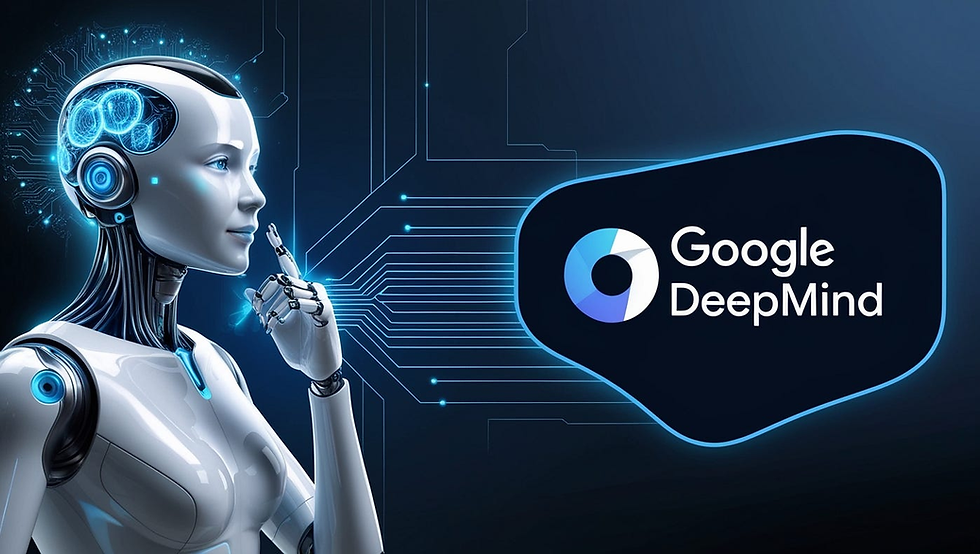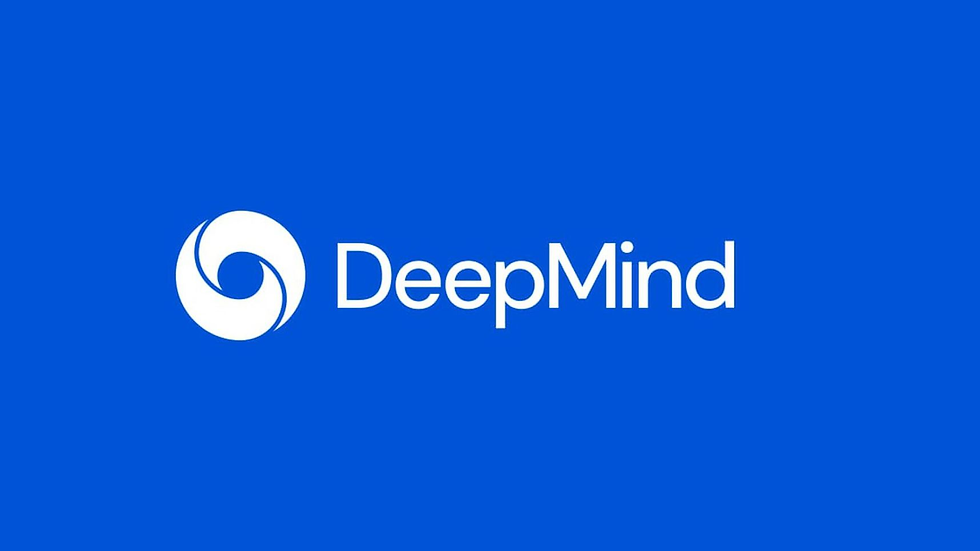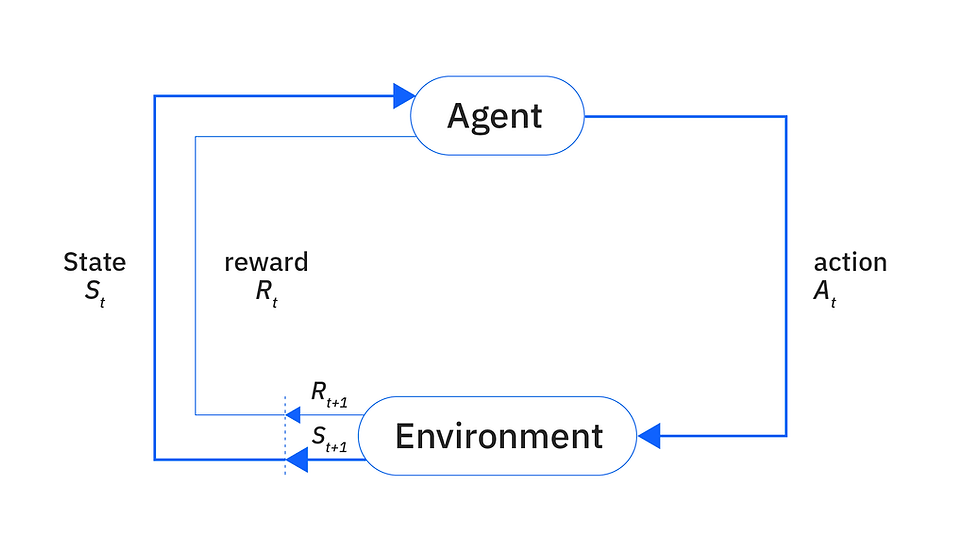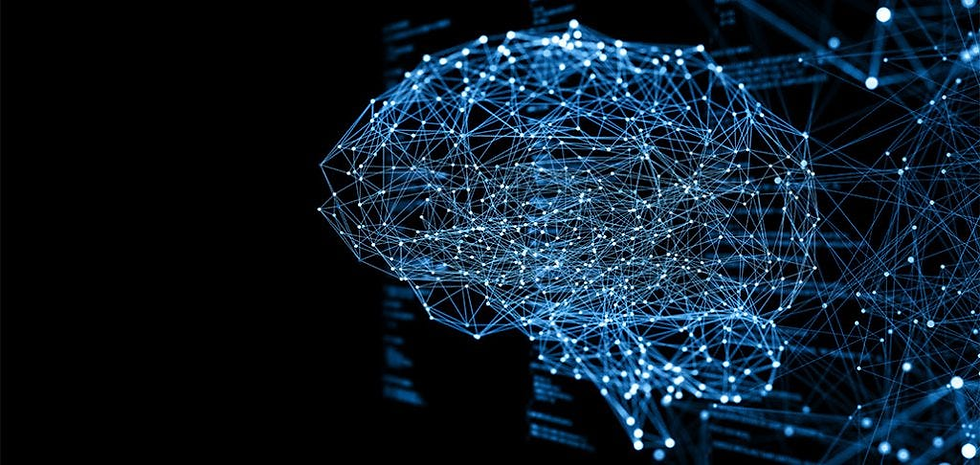Exploring DeepMind AI Research Innovations in Artificial Intelligence and Computational Models
- Aisha Washington

- Aug 3
- 10 min read
Updated: Aug 4

Artificial Intelligence (AI) is rapidly transforming industries, sciences, and everyday life. Among the vanguards of this transformation is DeepMind, a UK-based AI research lab renowned for pioneering advancements in machine learning, reinforcement learning, and computational models. This article delves deeply into DeepMind's AI research innovations, unpacking how their breakthroughs are reshaping the landscape of artificial intelligence and pushing the boundaries of what machines can achieve.
Whether you’re an AI enthusiast, researcher, or industry professional, understanding DeepMind’s contributions provides valuable insights into the future trajectory of AI technologies. This comprehensive exploration covers foundational research, cutting-edge models, real-world applications, and the ethical considerations shaping this influential organization’s work.
Introduction: The Significance of DeepMind in AI Evolution

Since its inception in 2010 and acquisition by Google in 2015, DeepMind has emerged as a global leader in artificial intelligence research. Their mission to “solve intelligence” by building systems that can learn complex tasks autonomously has led to some of the most celebrated achievements in AI history.
From mastering the ancient game of Go with AlphaGo to recent advances in protein folding with AlphaFold, DeepMind exemplifies how computational models and machine learning can be harnessed for extraordinary problem-solving capabilities. Importantly, DeepMind’s research is not just academic; it’s influencing sectors as diverse as healthcare, energy efficiency, and robotics.
Understanding DeepMind’s research innovations offers a window into next-generation AI systems that combine theoretical rigor with practical utility.
For readers interested in AI’s evolution and potential, this article provides detailed insights into DeepMind’s pioneering work across various domains.
DeepMind’s Foundational Research Areas
DeepMind’s innovations stem from a strong foundation in several key AI subfields, each of which contributes uniquely to the organization’s overarching goal of creating intelligent systems.
1. Reinforcement Learning (RL)
Reinforcement Learning is a framework where an agent learns to make decisions by interacting with an environment to maximize cumulative rewards. DeepMind’s focus on RL has led to algorithms capable of mastering complex games and control tasks.
Key innovation: Deep Q-Networks (DQN) — combining deep neural networks with Q-learning to enable agents to learn from raw pixel inputs.
Impact: DQN was pivotal in enabling AI to surpass human experts in Atari 2600 games.
Beyond games, DeepMind’s RL research has extended to real-world control problems, such as robotic manipulation and autonomous navigation. For example, RL agents trained with simulated physics environments have learned dexterous hand manipulation tasks, such as solving a Rubik’s Cube with a robotic hand. This demonstrates the potential of RL to bridge virtual training and physical-world applications.
Additionally, DeepMind has advanced RL algorithms to handle sparse and delayed rewards, improving the ability of agents to learn in complex, uncertain environments. Techniques like reward shaping, curiosity-driven exploration, and hierarchical reinforcement learning have been instrumental in this progress.
For a deeper dive into RL techniques, the seminal paper by Mnih et al., 2015 is a must-read: Human-level control through deep reinforcement learning.
2. Deep Learning and Neural Networks
DeepMind has developed novel architectures that improve the efficiency, generalization, and interpretability of neural networks.
Transformer models: Adapted and optimized for various tasks beyond natural language processing, such as protein folding (AlphaFold), reinforcement learning environments, and multi-modal data integration.
Graph Neural Networks (GNNs): For modeling relational data such as molecules or social networks. DeepMind has refined GNNs to better capture complex interactions in chemical compounds, enabling breakthroughs in drug discovery pipelines and material science.
Moreover, DeepMind’s work on attention mechanisms within neural networks has led to more effective ways for models to focus on relevant parts of the input data, enhancing performance on tasks like image recognition, natural language understanding, and scientific data modeling.
3. Generative Models
DeepMind explores generative models like Variational Autoencoders (VAEs) and Generative Adversarial Networks (GANs), expanding AI’s ability to create realistic data.
Their research extends to improving sample efficiency, stabilizing training, and enabling conditional generation. For instance, generative models have been used to synthesize realistic images, simulate molecular structures for novel drug candidates, and generate plausible text or speech data for human-computer interaction.
One notable application is the use of generative models in reinforcement learning to simulate possible future states, effectively augmenting an agent’s planning capabilities through learned environment models.
4. Computational Neuroscience
Inspired by the human brain, DeepMind integrates computational neuroscience principles to design more biologically plausible learning algorithms.
By investigating how neural circuits operate, DeepMind has contributed to models that mimic memory consolidation, attention control, and hierarchical learning observed in biological systems. This cross-disciplinary approach has led to innovations such as:
Spiking neural networks that more closely resemble biological neurons.
Learning rules inspired by synaptic plasticity.
Architectures incorporating working memory modules for improved sequential reasoning.
These insights not only enhance AI capabilities but also provide computational hypotheses for understanding cognition and brain function.
Reinforcement Learning Breakthroughs

AlphaGo: A Milestone in Game Playing AI
In 2016, DeepMind shocked the world when AlphaGo defeated Lee Sedol, one of the greatest Go players ever. Go’s complexity — with more possible board configurations than atoms in the universe — made it an exceptional challenge.
AlphaGo combined Monte Carlo Tree Search (MCTS) with deep neural networks trained to evaluate board positions and predict expert moves.
It learned both from expert human games and self-play, enabling it to discover novel strategies.
Demonstrated the power of model-free reinforcement learning coupled with search methods, overcoming a problem previously considered decades away from AI mastery.
AlphaGo’s architecture inspired numerous follow-up projects, including AlphaGo Zero, which learned solely through self-play without human data, and AlphaZero, which generalized the approach to other complex games like Chess and Shogi with minimal domain knowledge.
The success of AlphaGo not only made headlines but also catalyzed renewed interest in reinforcement learning research globally, inspiring applications beyond games.
MuZero: Mastering Unknown Environments
One of DeepMind’s most significant recent advances is MuZero, a model that learns game environments without explicit rules.
Unlike AlphaZero, MuZero builds an internal model of the environment dynamics purely from observations and rewards, without access to the underlying game rules.
Achieves state-of-the-art performance in multiple games (Go, Chess, Shogi, Atari) purely through trial-and-error learning combined with planning.
Represents a leap toward general-purpose AI systems capable of mastering unknown problems, a key step toward artificial general intelligence (AGI).
MuZero’s ability to learn an environment model end-to-end has implications for real-world scenarios where explicit models of the environment are unavailable or costly to acquire, such as robotics, autonomous driving, and complex decision-making systems.
Practical Applications of Reinforcement Learning
Beyond games, RL is applied to:
Robotics: DeepMind has developed RL agents capable of learning locomotion, manipulation, and even complex multi-step tasks in simulated and real environments. For example, RL-trained robots have demonstrated the ability to walk, climb stairs, and manipulate objects with dexterity, enabling automation in manufacturing and service industries.
Data Center Energy Management: DeepMind’s RL algorithms optimized Google data center cooling systems, reducing energy usage by up to 40%, demonstrating real-world operational impact (Google AI Blog). The system continuously learns and adapts to changing conditions, balancing energy efficiency with hardware reliability.
Personalized Education Systems: RL models adapt content sequencing based on learner behavior, optimizing engagement and knowledge retention. By modeling student responses as part of the environment, these systems can tailor curricula dynamically, enhancing learning outcomes in digital education platforms.
Financial Trading and Portfolio Management: Reinforcement learning agents are experimented with to optimize trading strategies, asset allocations, and risk management by learning from market dynamics and feedback.
Smart Grids and Resource Allocation: RL helps optimize energy distribution, balancing supply and demand while integrating renewable sources, aiding in the transition to sustainable energy infrastructures.
These examples illustrate how reinforcement learning, once confined to controlled environments, is increasingly impacting complex, real-world decision-making domains.
Advancements in Neural Network Architectures

AlphaFold: Revolutionizing Protein Folding
Biological protein folding has been a "grand challenge" due to the complexity of predicting 3D structures from amino acid sequences.
AlphaFold uses deep learning and attention mechanisms to predict protein structures with remarkable accuracy by modeling the relationships between amino acids and their spatial arrangements.
Outperformed traditional computational biology methods at CASP14 (Critical Assessment of Structure Prediction), achieving near-experimental accuracy on many targets.
Accelerates drug discovery, understanding diseases, and synthetic biology by providing structural insights previously only accessible through expensive and time-consuming laboratory methods.
AlphaFold’s architecture leverages transformer-based models and innovative loss functions tailored to capture the physical and chemical constraints of protein folding. Its open-source release has democratized access, enabling researchers worldwide to accelerate biomedical research.
Beyond proteins, DeepMind explores extending these techniques to RNA folding and complex molecular interactions, broadening the scope of AI-driven biological discovery.
Graph Neural Networks and Structured Data
DeepMind has innovated in GNNs for data that is naturally represented as graphs:
Molecular Property Prediction: By treating molecules as graphs of atoms and bonds, GNNs can predict chemical properties, toxicity, and binding affinities, aiding drug design and environmental safety assessments.
Social Network Analysis: GNNs help identify influential nodes, detect communities, and model information diffusion, improving recommendations and content moderation.
Traffic Flow Optimization: Modeling urban traffic as dynamic graphs enables predictive routing and congestion management, enhancing urban mobility and reducing emissions.
DeepMind’s advancements include scalable GNN architectures that handle large graphs, dynamic graphs that evolve over time, and methods integrating heterogeneous data types. These improvements make GNNs practical for diverse, complex applications requiring relational reasoning.
Memory-Augmented Networks and Meta-Learning
To enable rapid adaptation and reasoning, DeepMind researches memory-augmented neural networks that allow models to remember past experiences efficiently.
These models incorporate external memory components (e.g., differentiable neural computers) enabling the storage and retrieval of information beyond fixed-size model parameters.
Useful in tasks requiring long-term dependencies, one-shot learning, and reasoning over sequences.
Meta-learning techniques empower AI to learn new tasks quickly from limited data — a step closer to human-like learning flexibility.
DeepMind’s work in meta-reinforcement learning enables agents to adapt policies rapidly to new environments with minimal retraining.
Techniques such as Model-Agnostic Meta-Learning (MAML) and Bayesian optimization methods have been refined to improve sample efficiency and generalization.
These research directions aim to overcome the data-hungry nature of conventional AI, making models more practical for real-world use where labeled data is scarce or costly.
For more on these architectures, see: DeepMind’s research overview.
Applications in Healthcare and Science

Medical Imaging and Diagnostics
DeepMind’s AI models have been applied to analyze medical images such as retinal scans and mammograms with expert-level accuracy.
By leveraging convolutional neural networks and attention mechanisms, these models detect abnormalities like diabetic retinopathy, breast cancer, and eye diseases early.
Reduced diagnostic errors and inter-observer variability by providing consistent, objective assessments.
Enabled earlier disease detection, allowing for timely interventions that improve patient outcomes.
For example, DeepMind’s collaboration with Moorfields Eye Hospital produced an AI system capable of recommending urgent referrals for retinal diseases with accuracy comparable to expert ophthalmologists.
Additionally, AI models assist radiologists in prioritizing cases, reducing workload and accelerating diagnosis in clinical workflows.
Drug Discovery and Molecular Modeling
AlphaFold’s protein structure predictions accelerate drug target identification and molecular design pipelines.
Predicting protein folding structures enables researchers to understand binding sites and interaction mechanisms critical for drug efficacy.
Reinforcement learning models optimize molecule synthesis routes, reducing time-to-market for new drugs by suggesting efficient chemical reaction pathways.
Generative models create novel molecular structures with desired properties, expanding the chemical space explored in pharmaceutical research.
DeepMind’s AI tools facilitate virtual screening, toxicity prediction, and optimization of pharmacokinetics, helping pharmaceutical companies reduce costly experimental trials.
Climate Modeling and Energy Efficiency
DeepMind collaborates on climate simulations using AI to:
Improve weather prediction accuracy by integrating machine learning with traditional physical models, enabling more precise forecasts and disaster preparedness.
Optimize renewable energy grids by predicting supply-demand fluctuations and adjusting resource allocation dynamically, increasing grid stability.
Reduce carbon footprints through intelligent resource management in industrial processes and building energy consumption.
For instance, DeepMind’s AI models optimize wind turbine output by predicting wind patterns, enhancing renewable energy efficiency.
These applications illustrate how cutting-edge computational models translate into tangible societal benefits, addressing urgent global challenges.
Ethical AI and Responsible Innovation

DeepMind actively promotes ethical considerations surrounding AI development:
Ensuring transparency and fairness in algorithmic decisions by developing interpretable models and auditing tools to detect and mitigate biases.
Addressing biases inherent in training data by curating diverse datasets and implementing fairness constraints during model training.
Prioritizing privacy preservation techniques, such as federated learning and differential privacy, to protect sensitive information.
Advocating for AI safety protocols to minimize unintended consequences, including robustness against adversarial attacks and fail-safe mechanisms.
Their ethics board publishes research and guidelines emphasizing responsible innovation aligned with human values, collaborating with external experts, policymakers, and civil society.
DeepMind also invests in public engagement and education to foster trust and understanding of AI technologies.
The pursuit of advanced intelligence requires accountability as much as technical excellence.
Future Directions and Impact on AI Landscape

DeepMind continues pushing frontiers by focusing on:
Generalized intelligence: Creating versatile agents that solve broad classes of problems across domains without task-specific retraining. This includes research into multi-modal learning, continual learning, and unsupervised skill acquisition.
Human-AI collaboration: Building systems that augment rather than replace human expertise, emphasizing interactive AI that can explain decisions, learn from humans, and adapt to user preferences.
Explainable AI: Improving model interpretability to build trust and facilitate regulatory compliance, through techniques like saliency mapping, symbolic reasoning integration, and counterfactual analysis.
Environmental sustainability: Developing energy-efficient models aligning with global carbon reduction goals, such as sparse architectures, model compression, and optimized hardware utilization.
The ripple effects of DeepMind’s innovations extend across academia, industry, and policy-making — catalyzing new research directions and fostering interdisciplinary AI ecosystems.
DeepMind also plays an influential role in shaping AI governance frameworks and international collaborations, promoting responsible AI development worldwide.
Frequently Asked Questions (FAQ)
Q1: What makes DeepMind different from other AI research labs?
Answer: DeepMind uniquely combines fundamental research with practical applications while maintaining a strong ethical framework. Their focus on reinforcement learning combined with deep neural networks has yielded world-first achievements like AlphaGo and AlphaFold. Moreover, DeepMind’s interdisciplinary teams, access to vast computational resources, and collaborations with academic and industry partners enable rapid innovation and real-world impact.
Q2: How does reinforcement learning work in simple terms?
Answer: Reinforcement learning involves an AI agent learning through trial and error by receiving rewards or penalties based on its actions within an environment. Over time, it learns strategies that maximize cumulative rewards without explicit instructions. Think of training a dog with treats; the agent tries different behaviors and learns which ones lead to positive outcomes.
Q3: Can DeepMind’s AI be applied outside games?
Answer: Absolutely. Their algorithms optimize data centers for energy savings, assist healthcare diagnostics, accelerate drug discovery, improve robotics, and even contribute to climate science modeling. For example, DeepMind’s AI has reduced Google’s data center cooling energy consumption by 40% and developed systems to predict kidney injury in hospitals early.
Q4: What ethical concerns are associated with DeepMind’s research?
Answer: Key concerns include bias mitigation, decision transparency, privacy protection, ensuring AI safety, and preventing misuse. DeepMind addresses these proactively through dedicated ethics research teams, transparent publication of findings, and collaborations with external bodies to establish best practices.
Q5: How can I stay updated with DeepMind’s latest research?
Answer: Follow their official website (deepmind.com/research), subscribe to their blog updates, or track their publications on platforms like arXiv for cutting-edge papers. Engaging with their open-source tools and attending AI conferences where DeepMind researchers present also helps stay informed.
Conclusion: Harnessing DeepMind Innovations for an Intelligent Future
DeepMind’s research innovations represent some of the most transformative advances in artificial intelligence today. By pushing the limits of computational models — from reinforcement learning agents mastering complex games to neural networks decoding biological mysteries — they are charting a path toward versatile, powerful AI systems capable of tackling real-world challenges.
As these technologies mature, their integration into healthcare, energy, science, and beyond promises enormous societal benefits while raising important ethical considerations. Staying informed about DeepMind’s ongoing work equips practitioners, policymakers, and enthusiasts alike to better navigate the evolving AI landscape responsibly.
Actionable takeaway: Embrace interdisciplinary collaboration and continuous learning around DeepMind-inspired technologies to harness their full potential ethically and effectively in your domain.
By exploring DeepMind’s pioneering journey in artificial intelligence research innovations, this article aims to empower readers with knowledge essential for engaging with one of technology’s most exciting frontiers.

